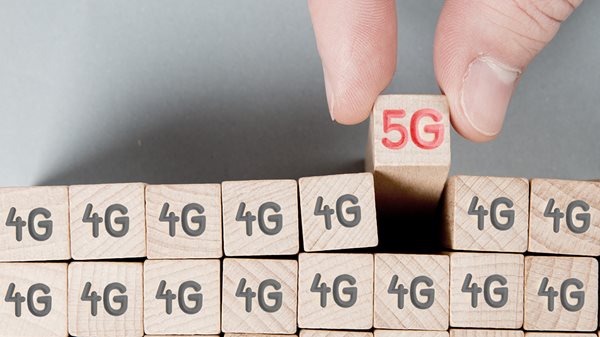Cellular networks are changing, and 2G and 3G networks are sunsetting. This leads to many concerns and questions from businesses, governments and industries with deployed devices based on older networks. When will 2G go away completely? When will 3G networks sunset? And will 4G LTE networks also be scheduled for shutdown, or is it safe to invest in them now? We will answer each of these questions.
As we shared in the blog post,
4G to 5G: How Long Will 4G LTE Be Available, the main reason for network shutdowns is that the carriers have limited spectrum available for expansion. In order to provide a faster, more responsive network to their customers, they must re-use the spectrum with newer, more efficient cellular technology. Old 2G/3G infrastructure makes way for new networks, and older cellular devices must be retired.
The good news is that 4G LTE will be available for at least a decade to come, and will co-exist with 5G networks. In this post, we’ll provide updates on the sunsetting of 2G and 3G networks and the outlook for 4G LTE and 5G networks, to support those who are planning their migration path.
When Will 2G Shut Down?

Most of America’s largest carriers have already shuttered their 2G service or plan to soon:
- AT&T stopped servicing its 2G network back in 2017.
- Verizon Wireless phased out its 2G CDMA network at the end of 2020.
- Sprint sunsetted their 2G CDMA network in December of 2021.
- T-Mobile plans to sunset their 2G network in December of 2022.
It’s important to note that customers will experience restrictions on 2G network usage and disrupted service before the actual sunset date. There are several factors. First, carriers are no longer activating new 2G devices in prepareation for total 2G network shutdown. Devices connected to the network may still function, but support will phase out. Secondly, carriers will re-farm spectrum ahead of the network shutdown, which means that 2G-only devices will no longer work as well in these locations, if at all.
In Canada, Bell shut down their 2G network in June of 2018. Both Telus and Rogers have also stopped supporting 2G devices. In Europe, where active 2G installations continued longer, Vodafone has promised that they won’t sunset their 2G service until at least 2025, but they will likely start re-farming spectrum ahead of that date.
Get Our Solution Brief
Learn about the network shutdown timelines
Download PDF
When Will 3G Go Away?

Like 2G, carriers are eager to sunset older 3G networks so that they can repurpose that spectrum to support 4G LTE and 5G. New devices need more speed, and 3G tops out around 3 Mbps. Besides being faster, 4G LTE is also more efficient, as it allows more devices to share the spectrum.
Here are some at-a-glance dates:
- Verizon will sunset its CDMA network at the end of 2022.
- AT&T has stated they will sunset their 3G network in February of 2022 with the last date for phone activation on the 3G network being already past.
- T-Mobile has stated that they will shutter their 3G networks in April, 2022.
- The last activation date for 3G on the Sprint network was April 2019 and the Sprint 3G network will be shut down in December of 2022.
More information on 3G sunset dates for Canadian and European carriers is available here.
To learn more about the transition from 3G to 4G, see our blog post, How to Ensure a Successful Migration from 2G and 3G to 4G LTE, about how to make that move as smooth as possible. You can find some additional information in the post, How to Stay Ahead of the 3G Network Sunset, which also describes why carriers shut down their 3G service instead of supporting it indefinitely.
When Will 4G LTE Be Phased Out? (Not for a Long Time!)

Like anything else, 4G will become obsolete one day. However, that day is far enough in the future that IoT deployments today and in the foreseeable future will be deployed on 4G networks. In fact, not only will it be at least a decade or more before 4G has been fully eclipsed by 5G, but 4G LTE is a more cost-effective choice — and offers plenty of bandwidth — for most IoT applications. 4G LTE, which stands for Long Term Evolution, has a long track ahead.
Meanwhile, 5G is a revolutionary new technology and very exciting, but at this time, it is only advised for early adopters. As with all new technology, testing and full rollout involve some bumps in the road, and important incremental development.
For example, 5G is limited today in terms of coverage, and network infrastructure has to evolve to deliver the 5G vision of “one ubiquitous network for all use cases.” Additionally, technologies like 5G mmWave are not ideal in areas with obstructions, such as buildings, dense foliage or rain and snow. Even double-pane glass can block a 5G mmWave signal. In practice, this means that the full 5G rollout will occur over the next 3-5 years and longer, depending on the geographic area.
Watch our recorded webinar for more thought leadership on 5G

How Will 4G LTE and 5G Co-exist?
To transition to 4G LTE, carriers needed to shut down the 3G spectrum in order to “make room” for the new networks. 5G is fundamentally different in two ways: First, it uses new spectrum, such as mid-band or high-band spectrum. And second, it can work in conjunction with 4G in existing spectrum, thanks to Dynamic Spectrum Sharing (DSS).
According to CNET, “Dynamic spectrum sharing lets carriers use the same spectrum band for both 4G and 5G. Instead of having different roads for buses and cars, DSS is like having one big highway with separate lanes for buses and cars.”
Many next-generation devices like cellular routers will be built with both 4G and 5G radios so that they’re capable of connecting to either network. At first, most data will be transmitted via 4G. However, over time as 5G coverage expands, more and more data will be transmitted via 5G. Therefore, to continue with the traffic analogy, 5G will eventually overtake 4G as the bigger lane on the freeway.
In Summary: Prepare for Change
Within the U.S., it’s reasonable to assume that by the end of 2022 there will not be a single major carrier supporting 2G. The same fate awaits 3G. 4G LTE operates under a different scenario, and we can confidently say that 4G will be around for at least another decade. And because 4G LTE has plenty of speed and reasonably low latency for most applications, it is an excellent choice for IoT applications today.
Those guidelines apply to developed countries like the U.S., Canada and Europe, in particular. In less developed countries, 4G LTE will likely remain the standard for several decades to come. Meanwhile, 5G networks will expand and ultimately deliver on their full promise, alongside the continued growth of 4G and the deployment of IoT applications.
Now is the time to plan and take action if you still have 2G/3G device deployments. With 4G LTE, you can continue growing your 4G deployments. If you are an early adopter, 5G may make sense for you soon.
Support for migration planning
As the world gears up for full deployment of 5G, Digi aims to keep you informed. See our 5G information page, The Journey to 5G, which provides a wealth of information and resources.
Digi is an expert in cellular network planning and migration. Reach out if you need assistance.
Next Steps
This post was first published in June of 2020, and was updated in June of 2021.